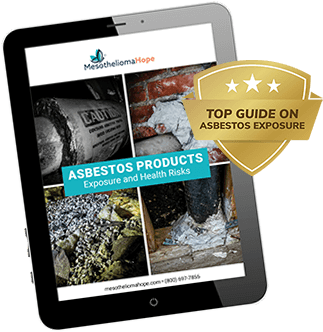Asbestos in Popcorn Ceilings Explained
The texture of popcorn ceilings was more than just an ornamental choice for homebuilders. It also had visual and noise-dampening properties.
Popcorn ceilings were embraced due to their ability to:
- Cover unfinished ceilings
- Conceal imperfections
- Absorb echoes and noise
As a result, the popcorn finish was popular widely used in homes from the 1930s through to the 1990s.
Asbestos The “Wonder Material”
It was during this time that asbestos was hailed as a wonder material—non-flammable, durable, lightweight, inexpensive and can be added to a wide variety of materials as a fire-proofer. Sadly, the material has instead been found to cause health problems and has claimed the lives of the people it was supposed to protect.
In 1977, the U.S. Government banned the use of asbestos in ceiling finishes, and most ceilings installed after this date will not contain asbestos. It is still possible, however, that materials manufactured before 1977 were installed in homes after the ban.
Ceiling materials generally do not expire and wholesalers, hardware stores, and contractors would have continued to work with the asbestos-containing materials that remained in their inventories before ordering safer materials.
Who Was Exposed to Asbestos in Popcorn Ceilings?
Asbestos is not dangerous when it is contained within a material and left undisturbed. So, homeowners are not necessarily at risk of asbestos exposure.
If you have a popcorn ceiling that contains asbestos in your home, you can safely encapsulate it by painting or texturing over top.
Asbestos becomes dangerous when the microscopic fibers are released into the air and then ingested or inhaled. The people who work with the material are the most likely to develop an asbestos-related disease.
Activities that would have presented this highest risk to workers:
- Working in a factory that manufactured popcorn ceiling finishes
- Mixing the material on-site
- Applying the popcorn finish
- Drilling into the ceiling to do electrical, plumbing or ductwork
Any other laborers or tradespeople working in the same general area as any of the above activities would have been exposed to airborne asbestos fibers.
Asbestos Exposure in Construction Jobs
Asbestos fibers are portable—they can be carried from one environment to another on surfaces like hair, clothes or skin. Cases of mesothelioma, a cancer caused by asbestos, have been found in spouses of workers, even though they never set foot on a construction site.
While asbestos is no longer used in modern construction, it still presents a risk to today. When buildings with popcorn ceilings are demolished or renovated, asbestos fibers become airborne. As a result, people will continue to develop asbestos-related diseases for decades to come.
Health Risks of Asbestos in Popcorn Ceilings
Asbestos fibers are invisible and undetectable without specialized tests. They can be breathed in or swallowed. Once inside the body, they become embedded into the soft tissue of the chest or abdominal cavity and are impossible to remove.
Asbestos fibers cause many health problems, including chronic coughing, phlegm, shortness of breath, and asbestosis. In the most serious cases, the fibers cause cancerous tumors known as mesothelioma, which are hard to detect and can spread quickly throughout the rest of the body.
Mesothelioma has a long latency period and can take decades to develop after initial exposure. For this reason, it can be difficult for mesothelioma victims to specify where exactly their exposure took place.
Seeking Justice for Asbestos Exposure
Many people have developed cancer as a direct result of working with asbestos in Popcorn Ceilings. If you or a loved one have been diagnosed with mesothelioma, you may be entitled to compensation.
In order to receive compensation, it is essential to pinpoint exactly where and how the exposure happened. The Mesothelioma Hope Team will help you build your case and demand justice.
Contact us to get in touch with us and to learn more.




